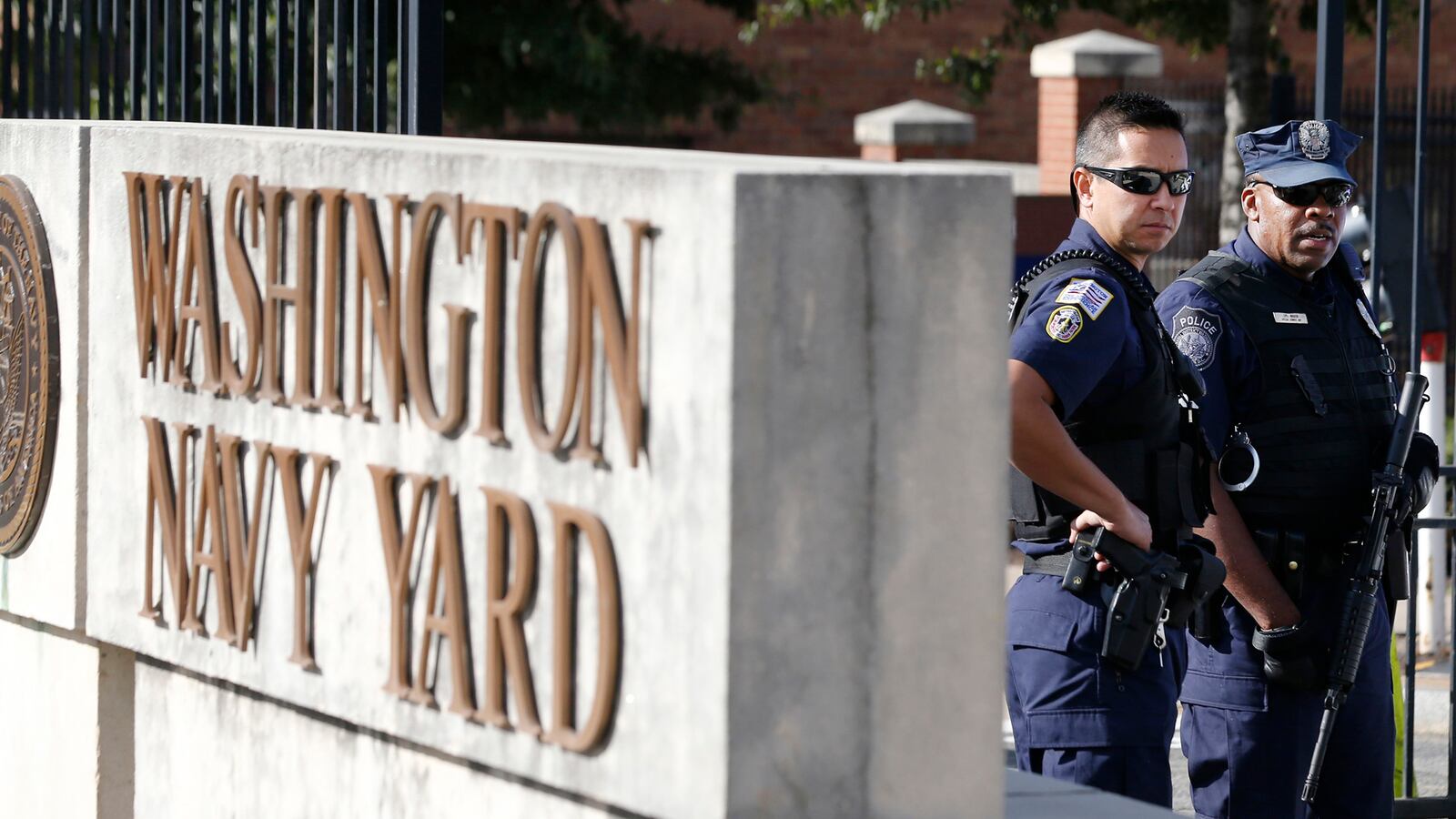The mass shooting in Washington, D.C., earlier this month helped focus the conversation once again on the government’s plagued federal security clearance system. Between the NSA intelligence leaks by Edward Snowden and Washington Navy Yard shooter Aaron Alexis’s access to secured jobs and buildings, multiple branches of the government have been forced to reconsider how clearances are vetted, yet there’s no clear answer on how to fix the system.

“We should really take a hard look at what security clearances afford people access to and what they can do with it,” said Rob Caruso, a former command security unit officer in the Navy. “We’ve had a spate of incidents where people have been forwarded access to information and received the final security clearance and have been found untrustworthy and borderline treacherous—so the idea that the program is working is patently false.”
One suggested way to fix the vetting process is by starting from the bottom up, and limiting the number of clearances handed out to begin with.
“The number of people eligible to hold clearances is 5 million people. That seems like an awful lot of people when you consider the number of people in the federal government,” said Brenda Farrell, defense capabilities and management director at the Government Accountability Office, which has done numerous internal studies on the government clearance process. “It’s like just about everybody in the federal government needs a clearance.”
Farrell says the process of fixing the system starts with making sure everyone who gets a clearance actually needs one, and that the type of clearance they receive is the right level. An executive government order specifies that each government organization must assign clearances based on “need for access and to keep to a minimum the number of employees that it determines a need for access to clearance.”
But that initiative is rarely followed seriously. “They are aware that they should keep clearances to a minimum, but how to go about that is what they don’t know,” she said.
In fact, the GAO filed a report in July 2012 that found that there was no correct, uniform way in which government contractors determined which positions needed what level of government clearance, if any. In 2006 an audit of an executive-branch agency found that the OPM and the inspector general had differing opinions on what jobs were to be assigned what level of clearance in 13 of 23 positions. Eleven of the positions were under-designated, and one was over-designated. Since the report the Director of National Intelligence has been tasked with determining set guidelines, but those guidelines have yet to be completed, and are still in the adjudication process.
Ben Friedman, a research fellow in defense studies at the CATO Institute, offers a different perspective. He says the way to cut down on the number of security clearances, and thus the large costs associated—at about $4,000 each for basic clearance—is to cut down on the amount of classified information, not clearances.
“It’s hard to imagine you would save more than a half a billion dollars a year [if you cut back on clearances]—which is a drop in the bucket,” says Friedman. “Just discretionary spending is over a trillion dollars a year ... if you are saying we want people with less clearances and contractors, then the way to do that is to have more openness to information and not more sullied information.”
As the debate on reforming the clearance system continues, it’s more likely that suggestions will use a multipronged approach—and if it’s anything like the current state of the government, it won’t be a swift change.
“I think the general discussion on how many individuals need security clearances is part of a broader discussion. I think the numbers should be looked at regardless of how we vet individuals,” said Robert Murrett, professor at the National Security and Counterterrorism Institute at Syracuse University. “I think we need to make a sound decision in terms of how many individuals it takes for us to support our government with security levels, and then we decide how to vet the security we need.”
In light of the Navy yard shooting that took 13 lives on September 16, the Department of Defense ordered a series of reviews looking into how Aaron Alexis received his clearance and why more warning signs weren’t present. The results of the review are due today.
The Senate is also independently evaluating the government oversight of security clearances in the wake of the Navy yard shooting. The Homeland Security and Governmental Affairs Committee was supposed to hold its first hearing on the topic Tuesday, but it was delayed because of the government shutdown.
“Our goal is to ensure that we learn as much from this tragic incident as we possibly can so we can prevent these types of incidents and reduce the chance of death and injury in the future,” Sen. Tom Carper (D-DE), chairman of the committee, told The Daily Beast in a statement. “Our Committee needs to take a closer look at the background checks process for individuals obtaining a security clearance or given access to sensitive facilities, whether they are contractors or federal employees.”
It’s unlikely any solid decisions regarding the security process will be made any time soon, especially as more imminent concerns such as the rollout of health-care exchanges and a government shutdown collided on the same day the hearings were scheduled. But some say just talking about reforming the clearance system is a much needed government criticism—it’s at least a step in the right direction.






